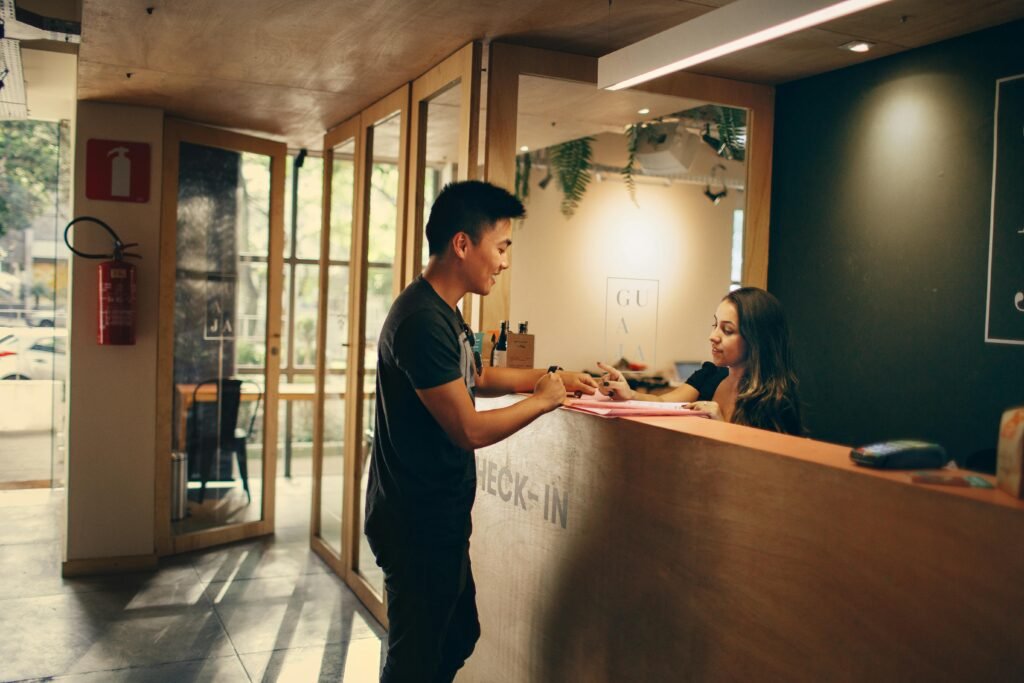Point of Interest (POI) recommendation systems are systems designed to suggest interesting or relevant locations to users, especially in the context of location-based social networks (LBSNs). These systems have attracted the interest of researchers in various fields. However, many existing systems face challenges in collecting data and classifying information. This lack of adaptability means that these systems may not be able to provide satisfactory recommendations for users with different social circles or relationship types. As a result, users may not receive recommendations that truly match their interests or needs.
One example of a challenge in collecting data and classifying information for POI recommendation systems is the issue of incomplete or inaccurate data. For instance, if a user’s location history is not consistently tracked or if the data is noisy (e.g., due to GPS errors), the system may have difficulty accurately determining the user’s preferences and interests. This can lead to recommendations that are not relevant or useful to the user.
Location-based social networks (LBSNs) are like regular social networking services (SNSs), but with a twist: they connect your online social life with the places you go in the real world. With LBSNs, you can easily share where you are and what you’re doing with your friends or family by checking in at different locations. This lets you share your real-life experiences, like shopping or dining out, in the virtual world of social media.
In recent years, more and more people have been using LBSNs because they offer a unique way to connect with others and share moments from their lives. One important feature of LBSNs is the point-of-interest (POI) recommendation system. This system suggests interesting places to users based on their preferences and activities. These recommendations can make using an LBSN more enjoyable and satisfying.
However, creating a good POI recommendation system is not easy. It’s a challenging task that has caught the attention of researchers who are trying to make these systems more accurate and helpful for users.

Point of Interest (POI) data has been leveraged in various ways to enhance recommender systems and predict activities in different tasks. Here’s how POIs have been utilized in tasks such as fraud detection and viral marketing:
- Fraud Detection: POIs can be used to detect fraudulent activities by analyzing the patterns of user behavior around certain locations. For example, if a user’s credit card is used for transactions at multiple locations within a short period, it could indicate fraudulent activity. By analyzing the geographical patterns of these transactions using POI data, fraud detection algorithms can identify suspicious behavior and flag it for further investigation.
- Viral Marketing: POIs can also be used in viral marketing campaigns to target users based on their location and interests. By analyzing the locations users visit and the types of activities they engage in, marketers can identify potential influencers who are likely to promote a product or service to their social circles. This can help in designing targeted marketing campaigns that are more likely to go viral and reach a larger audience.
In both cases, POIs provide valuable insights into user behavior and preferences, which can be used to enhance the quality of recommender systems and predict activities in tasks such as fraud detection and viral marketing.

Cross-selling in marketing refers to the practice of offering additional products or services to customers based on their current purchase or interests. This strategy can improve brand recognition and customer loyalty in several ways:
- Enhanced Customer Experience: By offering complementary products or services, businesses can enhance the overall customer experience. Customers may appreciate the convenience of finding related items in one place, which can lead to increased satisfaction and loyalty.
- Increased Sales: Cross-selling can lead to increased sales revenue by encouraging customers to purchase additional items. By suggesting products that complement the customer’s original purchase, businesses can capitalize on the customer’s existing interest and increase the average order value.
- Brand Recognition: Effective cross-selling can help reinforce brand recognition. When customers associate a brand with a wide range of relevant products or services, they are more likely to remember and choose that brand in the future.
- Customer Loyalty: By providing personalized recommendations and adding value to the customer’s shopping experience, businesses can build customer loyalty. Customers who feel understood and appreciated are more likely to return for future purchases.

In recent times, popular shopping events like “Double 11” in China and Black Friday in the United States have become even bigger. These events are known for their large-scale transactions, involving more people and a wider variety of products. They have a significant impact on how people shop and live their lives.
“Double 11” or Singles’ Day is a shopping holiday originating from China that occurs annually on November 11th (11/11). It started as an anti-Valentine’s Day celebration for single people in China but has evolved into the world’s largest online shopping event. During this day, many Chinese e-commerce platforms, especially Alibaba’s T mall, offer massive discounts, and consumers eagerly participate in online shopping.
Black Friday is a shopping event that originated in the United States and takes place the day after Thanksgiving, which falls on the fourth Thursday of November. It marks the beginning of the Christmas shopping season and is known for its significant discounts and promotions offered by retailers, both online and in physical stores. Black Friday has become one of the busiest shopping days of the year in the United States and is also observed in several other countries.
In location-based social networks (LBSNs), recommendations for places to visit can give users a lot of useful information in real-time. However, one of the biggest challenges in these systems is how to combine different types of information to make the best recommendations. To do this, a good framework is needed to carefully consider all the different features.

In previous studies, there were two main strategies used to tackle this challenge. The first strategy involved making recommendations based on just one factor or a few similar factors. This was done using methods like collaborative filtering or matrix factorization. While this approach was simpler, it often led to less accurate recommendations because it didn’t consider all the important information.
The other strategy involves using a clustering method to combine many different types of factors to make recommendations. For example, the fuzzy c-means algorithm can be used to group similar types of information together. However, this strategy can be inefficient because it doesn’t always combine the different types of information effectively.
To overcome these limitations, the present study proposes a new model that considers the relationships between users when making recommendations for places to visit. This approach aims to provide more accurate and personalized recommendations by taking into account how users are connected to each other in the social network.
Most research on recommending places of interest (POIs) has focused on using implicit feedback from user mobility data. Implicit feedback means using actions or behaviors of users, such as where they go, rather than explicit ratings or reviews. Researchers have also used spatial information, such as geographical location data, to recommend places that users have visited in the real world.
This paragraph explains that in studies about recommending places to visit, researchers often estimate the likelihood of a new place being visited based on the geographical distribution of places the user has already visited. They also consider temporal traits, such as the patterns of when and how often users check in to places, as these traits can reveal important information about user behavior in real life.

However, these studies have typically overlooked the social relationships of users, which can be more informative than their check-in records and stated preferences. This suggests that understanding who users are connected to socially can provide valuable insights into their behavior and preferences when it comes to visiting places.